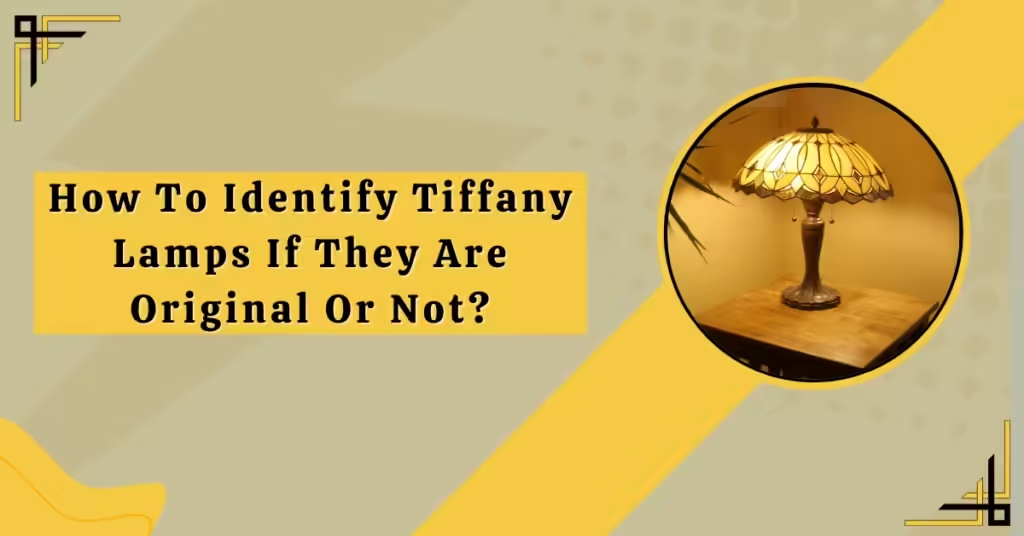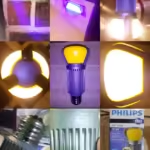How Do You Know If a Tiffany Lamp is Real, To identify a real Tiffany lamp, check for a signature on the base and inspect the glass quality. Authentic Tiffany lamps use hand-cut glass and have a distinct craftsmanship.
Tiffany lamps are iconic pieces of art known for their vibrant stained glass and intricate designs. Created by Louis Comfort Tiffany in the late 19th and early 20th centuries, these lamps have become highly collectible. Authentic Tiffany lamps are not only beautiful but also valuable.
Identifying a genuine Tiffany lamp involves examining the craftsmanship, materials, and maker’s marks. Knowing these details can help you avoid imitations and ensure the authenticity of your piece. Understanding the history and characteristics of Tiffany lamps can make your search more successful and rewarding.
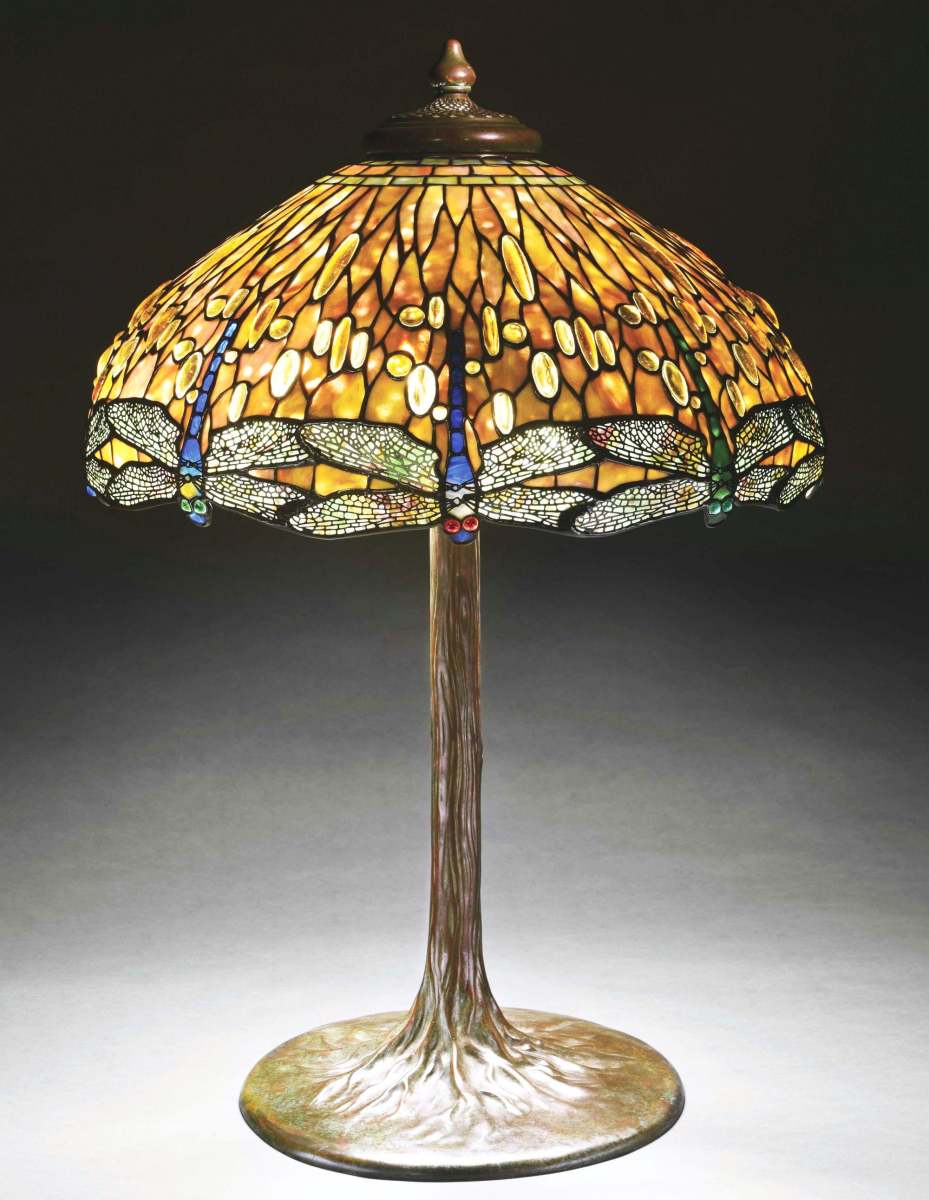
Credit: www.antiquetrader.com
History Of Tiffany Lamps
The history of Tiffany Lamps is rich and fascinating. These iconic lamps have become symbols of beauty and craftsmanship. Understanding their history helps us appreciate their value and identify their authenticity.
Origins
Tiffany Lamps were first created in the late 19th century. Louis Comfort Tiffany, an American artist, designed them. He was the son of the founder of Tiffany & Co. His passion for stained glass led to the creation of these beautiful lamps.
In 1893, Tiffany established a glassmaking factory in New York. This factory produced the unique glass used in Tiffany Lamps. The lamps were originally crafted by hand. Each piece of glass was carefully selected and cut.
Tiffany’s first lamps featured floral and geometric designs. These designs were inspired by nature and art movements like Art Nouveau.
Evolution Over Time
The designs of Tiffany Lamps evolved over time. They became more intricate and colorful. The lamps began to feature more complex patterns and motifs. These included dragonflies, peacock feathers, and landscapes.
In the early 20th century, Tiffany Studios expanded its product line. They introduced new types of lighting fixtures, including chandeliers and wall sconces. These new products also featured distinctive stained glass designs.
During the Great Depression, demand for Tiffany Lamps declined. The studio eventually closed in 1932. Despite this, the lamps remained popular among collectors and art enthusiasts.
Today, Tiffany Lamps are highly sought after. They are considered valuable antiques and works of art. Collectors and museums around the world cherish them.
Key Characteristics
Identifying a real Tiffany lamp involves examining several key characteristics. Genuine Tiffany lamps are renowned for their craftsmanship and unique design elements. This section will delve into the materials used and the design elements that set these lamps apart.
Materials Used
Authentic Tiffany lamps are made from high-quality materials. The most notable is the favrile glass, which Louis Comfort Tiffany invented. This glass has a distinctive iridescence, giving the lamp its unique glow.
Another significant material is the bronze base. Real Tiffany lamps use heavy bronze for the lamp base. It should feel solid and well-balanced. If the base is made of a lighter metal or feels flimsy, the lamp might not be authentic.
A table can help summarize the materials:
| Material | Characteristics |
|---|---|
| Favrile Glass | Iridescent, unique glow |
| Bronze Base | Heavy, solid, well-balanced |
Design Elements
Design elements are crucial in identifying a real Tiffany lamp. These lamps feature intricate designs, often inspired by nature. Look for floral patterns, dragonflies, and geometric shapes.
The glass pieces are carefully cut and led together. Genuine Tiffany lamps have smooth soldering lines, with no gaps between the glass pieces.
Here are some key design elements to look for:
- Floral and nature-inspired patterns
- Dragonfly motifs
- Geometric shapes
- Smooth soldering lines
Another sign of authenticity is the signature. Most real Tiffany lamps have a signature or stamp on the base. Look for the words “Tiffany Studios” or “L.C.T.”. This can help confirm the lamp’s authenticity.
Identifying The Glass
Recognizing a real Tiffany lamp involves examining its glass. Tiffany lamps are known for their stunning glasswork. Knowing what to look for can help you spot a genuine piece. Let’s dive into the specifics.
Types Of Glass
Tiffany lamps use different types of glass. Each type has unique characteristics.
- Favrile Glass: This is hand-blown glass. It has a distinctive, iridescent quality.
- Opalescent Glass: This glass has a milky appearance. It often mixes colors in one piece.
- Drapery Glass: This type mimics fabric folds. It adds texture and depth to the lamp.
Color Patterns
The color patterns in Tiffany lamps are intricate. They follow specific designs.
- Complex Color Combinations: A real Tiffany lamp has rich, varied colors. The colors blend seamlessly.
- Nature-Inspired Themes: Common designs include flowers, dragonflies, and peacock feathers. These themes reflect natural beauty.
- Consistent Quality: Each piece of glass is high-quality. There should be no cracks or bubbles.
By understanding these patterns, you can better identify a genuine Tiffany lamp. Look for these key features in the glass to ensure authenticity.
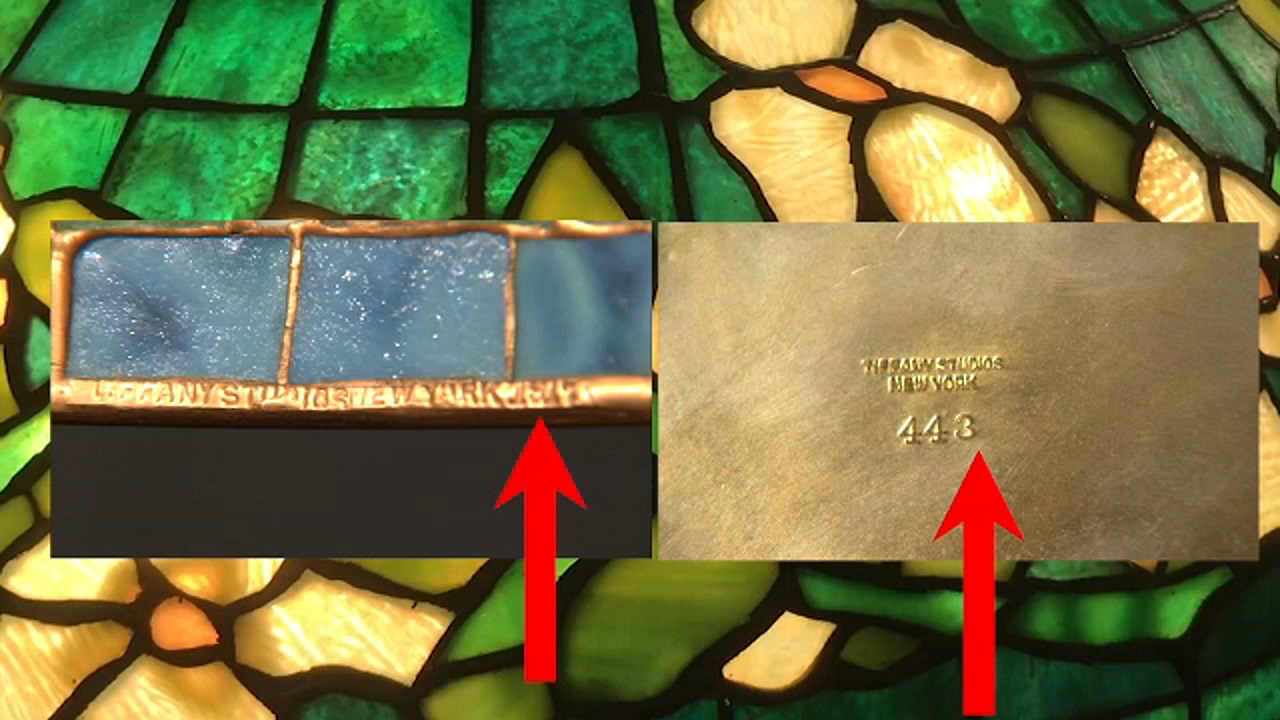
Credit: abc7ny.com
Lead Work And Soldering
Identifying a real Tiffany lamp involves examining its lead work and soldering. Authentic Tiffany lamps feature meticulous craftsmanship. Let’s delve into the specifics under the following headings:
Techniques
Real Tiffany lamps use a unique method for lead work. Craftsmen employed the “copper foil technique”. This involves wrapping each piece of glass in copper foil. The pieces are then soldered together. This technique ensures a tight and clean fit.
The solder lines on a genuine Tiffany lamp are smooth and even. They are not overly thick or messy. These lamps also show a uniformity in the soldering process. The joints are well-executed and consistent across the entire piece.
Quality Indicators
Several indicators can help identify authentic lead work and soldering:
- Smooth Solder Lines: Consistent and even without excess.
- Tight Fit: Each glass piece fits snugly without gaps.
- Uniform Joints: Solder joints are consistent in appearance.
Authentic Tiffany lamps often have a patina on the lead work. This patina adds to their antique appearance. The color is usually a dark brown or greenish hue. This patina forms naturally over time.
| Quality Indicator | Details |
|---|---|
| Smooth Solder Lines | Even and tidy without excess solder |
| Tight Fit | Glass pieces fit precisely with no gaps |
| Uniform Joints | Consistent and well-executed solder joints |
| Patina | Dark brown or greenish hue on lead work |
Examining these aspects can help determine authenticity. A real Tiffany lamp is a masterpiece of craftsmanship.
Base And Hardware
Identifying a real Tiffany lamp involves examining the base and hardware. These elements reveal much about the lamp’s authenticity.
Materials
The base of a Tiffany lamp is often made of heavy bronze. Real Tiffany lamps will not use lightweight materials. Authentic bases feature a patina, giving them a distinct look. This patina develops over time and cannot be easily replicated. Fake lamps might use cheaper materials like zinc or pot metal. These materials feel lighter and less sturdy.
Design Details
Real Tiffany lamps have intricate design details. The base often features detailed patterns and motifs. These designs are not just painted on; they are part of the structure. Authentic lamps may have botanical or geometric patterns. The lamp’s hardware, like the finial and switch, should match the era’s design. Look for pull chains or paddle switches, typical in original Tiffany lamps. Modern or toggle switches are signs of replicas.
| Feature | Authentic Tiffany Lamp | Fake Tiffany Lamp |
|---|---|---|
| Material | Heavy bronze with patina | Zinc or pot metal |
| Design Details | Intricate, part of the structure | Painted or less detailed |
| Switch Type | Pull chain or paddle | Modern or toggle |
Check the lamp’s base and hardware to identify authenticity. These aspects provide clear signs of a genuine Tiffany lamp.
Signatures And Marks
Identifying the authenticity of a Tiffany lamp can be tricky. One crucial method is examining signatures and marks. These details often reveal the lamp’s origin. Let’s explore the key elements to look for.
Artist Signatures
Genuine Tiffany lamps often have artist signatures. Look for the name “Louis Comfort Tiffany” or “Tiffany Studios”. The signature is usually etched on the base or shade.
Sometimes, the signature can appear in script or block letters. Check carefully, as the script may be faint. Use a magnifying glass for better visibility.
Be wary of fake signatures. Compare with verified examples online. Genuine signatures have consistent style and placement.
Factory Marks
Factory marks are another indicator of authenticity. Tiffany Studios used various marks over the years.
Common marks include “Tiffany & Co.”, “Tiffany Studios New York”, and model numbers. These marks are often found on the base or near the cord.
Some lamps may have both a signature and a factory mark. This combination is a strong sign of authenticity.
Below is a table summarizing common Tiffany marks:
| Mark | Description |
|---|---|
| Tiffany & Co. | Early mark, often on the base. |
| Tiffany Studios New York | Common marks, are found on various parts. |
| Model Numbers | Indicates specific lamp designs. |
Examine these marks closely. Ensure they match verified examples. Authentic marks have a certain precision and quality.
Provenance And Documentation
Determining the authenticity of a Tiffany lamp can be challenging. Provenance and documentation play a crucial role in this process. These elements provide valuable insights into the lamp’s history and authenticity.
Ownership History
A lamp’s ownership history can reveal much about its authenticity. Original Tiffany lamps often have a well-documented history. Look for previous owners who are known collectors. This can be a strong indicator of the lamp’s legitimacy.
Consider the following:
- Previous owners’ names
- Dates of ownership
- Any notable exhibitions or auctions
Ownership history can sometimes be found in auction catalogs or collector records. Ensure this information is verifiable.
Certificates
Authentic Tiffany lamps usually come with certificates of authenticity. These documents are essential for verifying the lamp’s origin. Look for certificates from reputable organizations or experts.
Certificates should include:
- The lamp’s description
- The expert’s signature
- The date of certification
Be cautious of fake certificates. Always verify the credentials of the certifying expert.
Common Reproduction Techniques
Identifying a genuine Tiffany lamp can be challenging. Many reproductions exist that mimic the original designs. Understanding common reproduction techniques helps in making an informed decision.
Modern Replicas
Modern replicas are often mass-produced. These lamps use cheaper materials and shortcuts in craftsmanship. Here are some common characteristics:
- Glass Quality: Modern replicas use machine-cut glass pieces. The colors may not be as vivid as the originals.
- Soldering: The solder lines in modern replicas are usually thinner and less detailed.
- Base Material: Modern replicas often use resin or cheaper metals. Original Tiffany bases are made of high-quality bronze.
Vintage Reproductions
Vintage reproductions are older copies, made to look like original Tiffany lamps. They can be harder to spot. Key differences include:
- Patina: Vintage reproductions might have artificial patina. The wear and aging on these lamps can look unnatural.
- Glass Cutting: Pieces of glass may not fit as perfectly. The edges might be rougher.
- Maker’s Mark: Original Tiffany lamps often have a signature or maker’s mark. Reproductions might use similar marks but with slight differences.
By examining these details, you can better determine the authenticity of a Tiffany lamp.
Expert Consultation
Determining if a Tiffany lamp is real can be tough. Expert consultation is often necessary. Experts can confirm the lamp’s authenticity. Their knowledge is invaluable. Let’s dive into the roles of appraisers and specialists.
Appraisers
Appraisers are trained to identify genuine Tiffany lamps. They examine key features like:
- Glass Quality: Real Tiffany lamps use high-quality glass.
- Lead Lines: Authentic lamps have smooth, intricate lead lines.
- Base Material: Genuine bases are made of bronze or brass.
Appraisers also check for the maker’s marks. These are small stamps or signatures on the lamp. They might be on the base or the shade.
An appraisal report is detailed. It includes:
- Condition of the lamp
- Materials used
- Estimated value
Finding a certified appraiser is crucial. They should have experience with Tiffany lamps.
Specialists
Specialists focus on specific aspects of Tiffany lamps. Some might study only the glass. Others might focus on the lamp’s construction. Their expertise can be very specific.
Specialists can identify:
- Glass Patterns: Real Tiffany lamps have unique patterns.
- Technique: Authentic lamps use the copper foil technique.
- Patina: Genuine bases have a natural aged look.
Consulting a specialist can provide extra assurance. They might notice details others miss.
Both appraisers and specialists are valuable. Together, they offer a complete picture of the lamp’s authenticity.
Condition And Restoration
Understanding the condition and restoration history of a Tiffany lamp is crucial. It helps in verifying its authenticity. Authentic Tiffany lamps often show signs of age. These signs can indicate if the lamp is genuine or restored.
Signs Of Wear
Genuine Tiffany lamps will often display signs of wear. These can include:
- Patina on the metal parts
- Small cracks in the glass
- Discoloration of the glass
Check the base of the lamp for patina. Patina forms over time and is hard to fake. Look for small cracks in the glass pieces. These cracks are natural with age. Discoloration can also indicate genuine Tiffany glass. The colors may fade or change slightly over the years.
Restoration Indicators
Restored Tiffany lamps often show restoration indicators. These signs can help identify if the lamp has been repaired:
- Newer soldering on glass pieces
- Replaced or mismatched glass
- Modern electrical wiring
Examine the soldering on the lamp. Newer soldering may look too shiny. This can indicate recent repairs. Mismatched or replaced glass pieces can also be a clue. The glass may not blend perfectly with the original. Check the wiring inside the lamp. Modern wiring might suggest restoration work.
Here is a table summarizing the key points:
| Signs of Wear | Restoration Indicators |
|---|---|
| The patina on metal parts | Newer soldering |
| Small cracks in the glass | Replaced glass |
| Discoloration of glass | Modern electrical wiring |
Knowing these signs can help in identifying a real Tiffany lamp. Always examine the lamp closely. Look for these indicators to determine its authenticity.
Market Trends
Understanding market trends is crucial to identify a real Tiffany lamp. The market reflects the value and demand for these lamps. Let’s explore the key aspects.
Value Fluctuations
The value of Tiffany lamps can change over time. These fluctuations depend on several factors:
- Age: Older lamps often hold more value.
- Condition: Well-preserved lamps are worth more.
- Rarity: Unique designs increase value.
Keeping track of market prices helps gauge a lamp’s worth. Regularly check auction results and antique shops for updates.
Collector Demand
Collector demand significantly impacts Tiffany lamp prices. High demand usually leads to higher prices.
Factors influencing collector demand include:
- Design Popularity: Some designs are more sought-after.
- Historical Significance: Lamps with historical value attract collectors.
- Brand Authenticity: Genuine Tiffany lamps are highly desired.
Engage with collector communities to understand trends. Online forums and social media groups offer valuable insights.
Spotting Fakes
Identifying a real Tiffany lamp can be tricky. Many fakes exist. Knowing how to spot a fake is crucial. Below, we’ll discuss common red flags and expert tips.
Common Red Flags
Many fakes have obvious signs. Here are some things to watch out for:
- Inconsistent Colors: Real Tiffany lamps have consistent, vibrant colors.
- Poor Craftsmanship: Check for sloppy soldering. Real lamps have neat joints.
- Materials: Genuine Tiffany lamps use high-quality glass. Fakes often use plastic.
- Signatures: Authentic lamps have a signature. Look for “Tiffany Studios” or “Louis Comfort Tiffany.”
Expert Tips
Experts use several methods to spot fakes. Here are their top tips:
- Inspect the Base: The base should be heavy and solid. Look for “Tiffany Studios” markings.
- Check the Patina: Real Tiffany lamps have a natural patina. Fakes often have a painted look.
- Examine the Shade: The shade should have tight, even leading. Avoid lamps with loose, uneven leading.
- Consult an Expert: If unsure, consult a professional. They can verify the lamp’s authenticity.
By using these tips, you can confidently identify a real Tiffany lamp. Always be cautious and do thorough checks.
Where To Buy
Finding an authentic Tiffany lamp can be exciting. Knowing where to buy is crucial. This guide will help you find the best sources.
Reputable Dealers
Reputable dealers ensure authenticity. They often have physical stores. You can visit and inspect the lamp in person. This reduces the risk of buying a fake.
Dealers usually have certifications. They provide documents proving the lamp’s authenticity. These documents are valuable for future resale. Trusted dealers also offer warranties. This adds an extra layer of security to your purchase.
Online Marketplaces
Online marketplaces offer convenience. Sites like eBay, Etsy, and 1stDibs have many listings. But be cautious. The risk of fakes is higher online.
Check seller ratings and reviews. Look for high ratings and positive feedback. Ask for additional photos. Detailed images help verify the lamp’s authenticity.
Use secure payment methods. PayPal and credit cards offer buyer protection. This can be crucial if a dispute arises.
| Source | Benefits | Risks |
|---|---|---|
| Reputable Dealers | Authenticity, Certification, Warranties | Higher Prices |
| Online Marketplaces | Convenience, Variety | Risk of Fakes, Need for Caution |
- Always verify the seller’s reputation.
- Ask for proof of authenticity.
- Use secure payment methods.
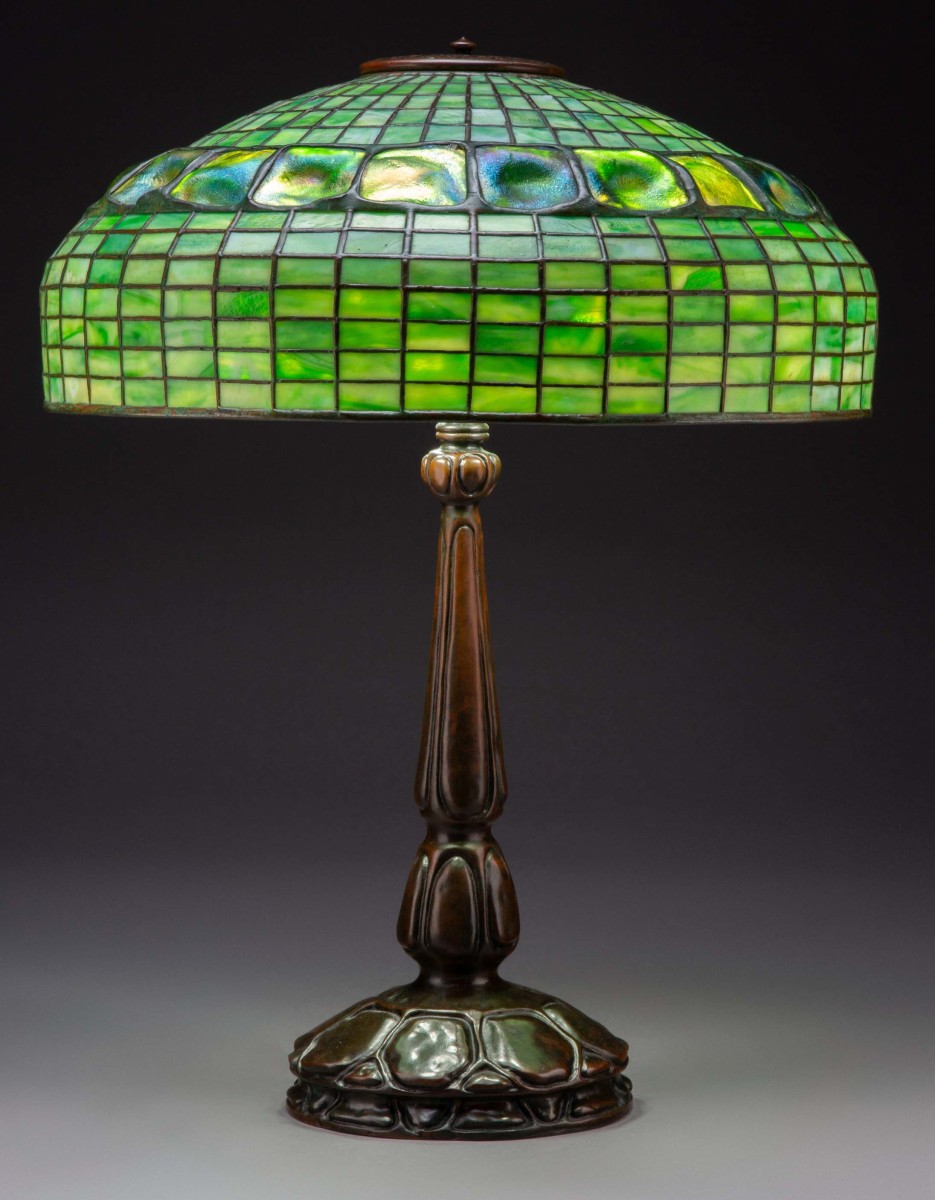
Credit: www.antiquetrader.com
Price And Value
Understanding the price and value of a Tiffany lamp is crucial. Real Tiffany lamps are known for their beauty and craftsmanship. But how can you tell if a Tiffany lamp is genuine? Let’s explore the factors affecting price and its investment potential.
Factors Affecting Price
Several factors influence the price of a Tiffany lamp. These factors help in determining its authenticity and worth. Key factors include:
- Condition: Lamps in pristine condition fetch higher prices.
- Rarity: Rare designs are more valuable.
- Age: Older lamps, especially from the early 20th century, are prized.
- Signature: A genuine Tiffany signature adds immense value.
- Provenance: Lamps with documented history have higher worth.
Investment Potential
Purchasing a real Tiffany lamp can be a smart investment. These lamps often appreciate over time. Here are a few reasons why:
- Timeless Appeal: Tiffany lamps never go out of style.
- Artistic Value: They are considered pieces of art.
- Market Demand: There is always a demand for genuine Tiffany lamps.
- Limited Supply: Authentic Tiffany lamps are limited in number.
Investing in a real Tiffany lamp is not just about beauty. It’s about owning a piece of history and art. Be sure to verify authenticity before making a purchase.
Care And Maintenance
Taking care of your Tiffany lamp is important. It helps keep its beauty intact. Proper maintenance ensures the lamp stays in great condition for years. Below are some tips on how to clean and preserve your Tiffany lamp.
Cleaning Tips
Regular cleaning is crucial for your Tiffany lamp. Follow these tips:
- Use a soft, dry cloth to remove dust.
- Never use harsh chemicals. They can damage the glass.
- If needed, use a mild soap solution. Mix a few drops of soap with water.
- Dip the cloth in the solution. Gently wipe the glass surfaces.
- Dry the lamp with a clean, soft towel.
Remember to clean the metal parts too. Use a cloth dampened with water. Avoid getting water into electrical parts.
Preservation Methods
Preserving your Tiffany lamp involves several steps:
- Avoid direct sunlight. It can fade the glass colors.
- Keep the lamp in a cool, dry place. Humidity can harm the metal parts.
- Check the lamp’s base regularly. Ensure it is stable and not wobbly.
- Inspect the electrical components. Look for signs of wear or damage.
- Use the lamp gently. Avoid knocking it over or handling it roughly.
Following these methods will help maintain the lamp’s beauty. It also ensures safety while using the lamp.
Frequently Asked Questions
Where Is The Stamp On A Tiffany Lamp?
The stamp on a Tiffany lamp is typically found on the base. It reads “Tiffany Studios” followed by a number.
Do Tiffany Lamps Have A Mark?
Yes, authentic Tiffany lamps often have a mark. Look for the signature “Tiffany Studios” on the base.
What’s The Difference Between A Tiffany Lamp And A Tiffany Style Lamp?
A Tiffany lamp is an original, handcrafted lamp by Louis Comfort Tiffany. A Tiffany-style lamp is a replica, mass-produced.
How Can You Tell A Tiffany?
To identify a Tiffany piece, check for the signature, quality craftsmanship, and a hallmark stamp. Verify authenticity through reputable sources.
What Are Tiffany Lamps?
Tiffany lamps are stained glass lamps designed by Louis Comfort Tiffany.
How To Identify A Real Tiffany Lamp?
Check for leaded glass, bronze base, and Tiffany Studios signature.
Are All Tiffany Lamps Signed?
Most authentic Tiffany lamps are signed “Tiffany Studios” or “L. C. T. “
What Materials Are Used In Tiffany Lamps?
Authentic lamps use leaded glass and bronze for the base.
How Much Is A Real Tiffany Lamp Worth?
Prices vary, but genuine Tiffany lamps can be worth thousands.
What Are Common Tiffany Lamp Designs?
Common designs include dragonfly, wisteria, and geometric patterns.
Conclusion
Identifying a real Tiffany lamp requires careful examination. Look for authentic markings, quality craftsmanship, and reputable sources. Keep these tips in mind to ensure your purchase is genuine. By doing so, you can enjoy the timeless beauty and value of an authentic Tiffany lamp in your home.

